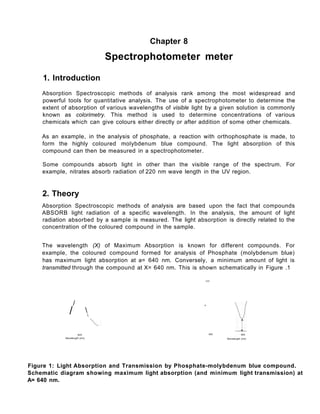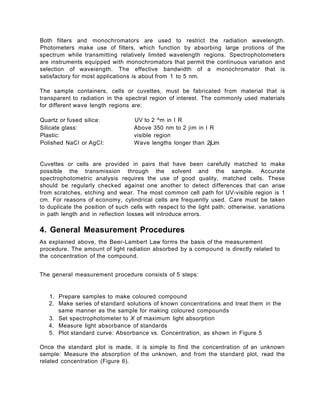This document discusses spectrophotometry and the Beer-Lambert law. It provides:
1) An overview of how spectrophotometers work by measuring the absorption of light by chemical compounds and relating absorption to concentration according to the Beer-Lambert law.
2) A description of the basic components of a spectrophotometer including a light source, wavelength selector, sample cuvette, detector, and readout device.
3) Explanations of how to prepare and measure standards to generate a calibration curve to determine unknown concentrations.







